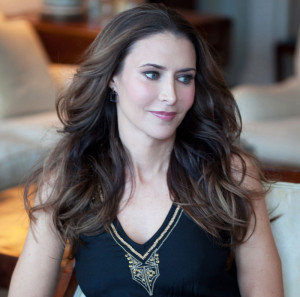Karen Abbott Talks Whiskey
By Richard Thomas

American history and whiskey are inextricably intertwined, starting with George Washington’s white rye-making distillery and The Whiskey Rebellion, or perhaps even further back with the roots of Bomberger’s Distillery and Elijah Craig if you believe the legends. Whiskey is such a constant fixture in the American story that getting away from it is nearly impossible, especially if you examine the story’s seedier aspects, as best-selling “sizzle history” author Karen Abbot often does.
Whiskey is frequently on the table and in the flasks of the personalities in Abbott’s work, such as Sin in the Second City and the forthcoming Liar, Temptress, Soldier, Spy, the story of four women spies during the Civil War. Abbott herself is also partial to a little bourbon from time to time, and had plenty to say about both her own tastes and those of some of her Civil War subjects.
RT: You like whiskey, but you’ve said your favorite drink is a Hendrick’s martini. What prompts you to say “I’ll have a bourbon” over a martini?
KA: The fall weather always makes me crave a bourbon, a nice palette cleanser after a summer of cloyingly sweet cocktails. I have one favorite, Admiral Schley Punch: bourbon, rum, the juice and peel of a whole lime, and a little sugar. It a moody drink, dark and stormy, but tart, too–the perfect transition drink for the fall.
RT: Has your love of that martini led you into any of the interesting whiskey cocktails that the mixology boom has whipped up?
KA: You can never have too much elderflower, in my opinion. Well, I suppose you can, but still–I tried it for the first time a few years ago and was entirely won over; it’s like ambrosia to me. My favorite concoction is the Elderflower Collins: elderflower cordial, lime wedge, whiskey, cubed ice, dry ginger ale, served in a tall glass. Hits the spot every time.
RT: Your go-to bourbon is Knob Creek, neat, which is a fine choice by the way. Do you have any other favorites?
KA: While working on Liar, Temptress, Soldier, Spy, I tried Old Crow, which was said to be Ulysses S. Grant’s favorite. Can’t say I shared his taste… however, I would never turn down a bit of Evan Williams black label.
RT: As an author, you do “sizzle history,” exploring the salacious slice of America’s past. I’m sure you’ve come across some personable, whiskey-drinking types in your research. Who stands out as the most memorable one who might say “whiskey, make it a double” at the bar? Or maybe even a triple?
KA: I’d have to say one of my characters in Liar, Temptress, Soldier, Spy: Belle Boyd, who was a 17-year-old spy for the Confederacy and a complete spitfire; she was all id and had no filter. She had an unhealthy obsession with Stonewall Jackson (even expressing a desire to “occupy his tent and share his dangers”) and she regularly seduced Union soldiers. In her spare time, she sold whiskey to Confederates. Once, when a soldier refused to pay Belle $3 for his drink, she instigated a bloody fight between two companies–one side defended their comrade, and the other side rallied behind her. I think Belle probably could’ve drank most of them under the table.
RT: Your next book, Liar, Temptress, Soldier, Spy, is about women spies in the Civil War. Did your work on that book carry away any impressions about the place of whiskey in American life then versus today?
KA: I found the role whiskey played in the Civil War fascinating–I read quite a bit about how the South prohibited bourbon distilling during the war, partly because they needed the corn to feed the soldiers. But of course the men did whatever they could to get their hands on booze. One of my favorite anecdotes involved Franklin Stearns, who was a good friend of the Union spy Elizabeth Van Lew. Stearns owned a distillery in Richmond, the Confederate capital, and was exceptionally busy during the war–a fact that did not go unnoticed by the Southern press. He did such robust business with Confederate soldiers—$5,000 per day, by one account—that Richmond newspapers called for his execution. “It is the universal conviction,” ranted the [Richmond] Examiner, “that Franklin Stearns, by means of his whiskey, has killed more of our men and done more to disorganize our army than all the balance of the Yankee nation put together.”
RT: You live in New York now, as I understand it. If you were to get together with some fellow writers for a round of sipping whiskey, what NYC whiskey bar would you chose?
KA: God, so many! I love the bar at Keens, which is this old-school (circa 1885) steakhouse. The ceiling is covered in pipes–they used to have a “Pipe Club” with quite an impressive membership roster: Teddy Roosevelt, Babe Ruth, Will Rogers, Billy Rose, Albert Einstein. As for more modern environs, I like Noorman’s Kil (fantastic grilled cheese is a bonus), Highlands, and d.b.a. Also, you can never go wrong at the Algonquin, although the bar tab is inevitably the equivalent of a small down payment. I always think of Dorothy Parker’s famous poem when I’m there:
I love a martini—
But two at the most.
Three, I’m under the table;
Four, I’m under the host.



